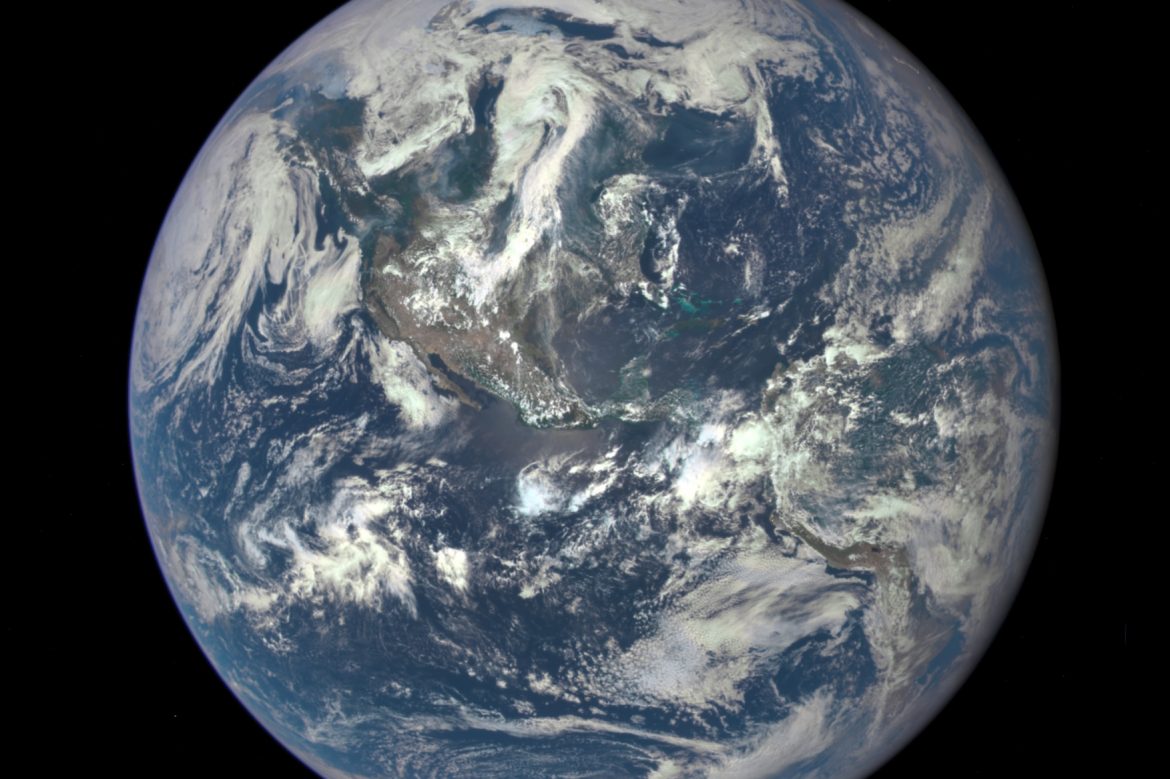The Earth appears in all its glory in the above image which does justice to the moniker “Beautiful Blue Planet”, sent from 1.5 million kilometers away by NASA’s Deep Space Climate Observatory (DSCOVR) launched in February and recently parked in its stationary orbit between the Earth and the sun.
The blue color of our planet, the source of the epithet, is not due solely to the oceans covering 71 percent of its surface. Its wavelength being shorter than other colors in the visible (optic) region in the solar electromagnetic spectrum, the blue light scatters more off the molecules in Earth’s atmosphere, contributing to the blue haze.
Lagrange Points
DSCOVR, orbits what is called Lagrange 1, or L1, one of the five spots in space where gravitational pulls of the sun, Earth and the Moon cancel each other, named after the Italian-born French mathematician Joseph-Louis Lagrange who caculated their positions. An object, which has a tighter orbit around the sun than Earth’s 150 million kilometers away, has to rotate faster in order to maintain its distance. But if its aligned with the sun and the Earth, the latter’s gravitational pull partly reduces that of the sun’s on the object, eliminating its need for extra speed. And provided it’s at the right distance – one-hundreths of the Earth-sun distance or 1.5 million kilometers closer to the sun – its rotational period will match the Earth’s. In other words, it will always face the sunlit side of the planet.
And Later?
DSCOVR will monitor “space climate” events like the flow of charged particles from the sun’s atmosphere called coronal mass ejections (CME) which, if directed at our planet, may harm astronauts and damage orbiting satellites or power grids on Earth. It will also measure the ozone and aerosol layers and keep tabs on cloud altitudes and changes in vegetation.
As the clouds of charged solar particles will be detected by DSCVR an hour earlier than their arrival on Earth, the spacecraft will serve as an early warning station, providing time for the implementation of measures to counter the potentially harmful effects of the space weather.
REFERENCES
- 1. “NASA satellite camera provides ‘EPIC’ view of Earth”, NASA Goddard Space FlightCenter, 20 TJuly 2015
- 2. “What Are Lagrange Points?”, http://www.esa.int/Our_Activities/Operations/What_are_Lagrange_points



